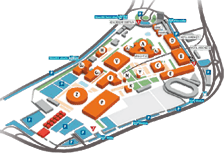OPTA
8.-10.4. 2022
International Eye Optics, Optometry and Ophthalmology Fair

The Czech optics market continues to grow
The industry trends were the subject of a lecture by the vice president of the Association of Czech Opticians and Optometrists Ivan Vymyslický at the OPTA trade fair. In 2015, Czech opticians’ revenues grew five percent on average and demographic trends along with growing demands on the quality of vision promise continued growth.
People annually spend over four billion Crowns for eyeglasses and contact lenses in the Czech Republic, but more and more opticians’ share these sales. Their number has grown to 1600, and should increase further, although, for example, Germany saw a slight decline in recent years. According to Ivan Vymyslický, who analyses the market situation, the main reason for the current situation is the aging Czech population and shift of the generation of so-called Husak's children to presbyopic age. "The demands of these users are very high. They live actively, practice sports, use modern technologies, all of which require high visual quality. That's a big chance for opticians and a promise of growth of the sector in the next 15-20 years," says Vymyslický. Already now roughly half the population needs glasses, and it will be 60 percent of the Czech population in 2020. Situation is also further supported by the so-called visual stress, i.e. the use of electronics such as computers and mobile phones. Eyes then need to rest and relax, among other things with glasses. Like elsewhere in Europe, the Czech opticians’ market is still being more and more successfully penetrated by the retail chains. The largest global giant company is Hal Investments, whose chains operate more than five thousand opticians in 42 countries. The logical defence of independent opticians is to join associations to obtain better purchase prices, which however is not happening in this country very much. While in Germany, approximately seven thousand out of nine thousand independent opticians’ are members of associations, according to Vymyslický, none such cooperation exists among some 960 independent opticians here. On the other hand, even the Czech Republic sees a growing trend of remote grinding. In Europe, every twentieth opticians do not grind lenses anymore and only use external supply.
Another trend lies in a gradual shift from refractive eye measurement from doctors to optometrists. During the last twenty years, Germany experienced a turn where the original ratio of 40 to 60 percent changed to 80 to 20 percent in favour of Optometrists, but Ivan Vymyslický thinks this turnaround will take longer here. It is partly enhanced by the constant aging of ophthalmologists, whose average age in the Czech Republic now reaches 51.4 years.
Regarding the offer on the Czech market, it is on par with most developed countries and there is perfect competition. The difference is in the high proportion of discounted goods. While only about one-fifth of opticians’ goods are on special sale elsewhere in the world, here it is almost a whole half. People quite often buy contact lenses and glasses through the Internet, in drugstores or even at the petrol stations, yet many of them will eventually end up in opticians. "The gap between quality and good service on the one hand and low price on the other is increasingly diverging," said Ivan Vymyslický.
OPTA
For Exhibitors
For Media
You might be interested in
Highlights from companies





